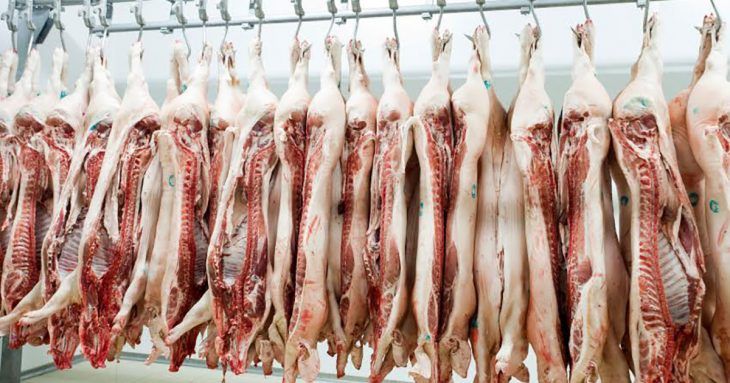U.S. meat export challenges remain, but industry on track for a record year
by August 17, 2020 12:43 pm 1,203 views

U.S. meat production is on track for a record year, according to Derrell Peel, livestock marketing specialist at Oklahoma State University Extension. Peel said before COVID-19, it was recognized that meat trade would be critical for markets in 2020 and that remains true.
After the severe disruptions in the first half of the year, expectations for meat trade have been revised and there is more uncertainty about global meat markets going forward, Peel said.
The U.S. Meat and Export Federation said pork exports through June were up 27.4% year over year, led by a 335.6% year-over-year increase in pork exports to China as African Swine Fever limited China’s pork supply. Peel said China has replaced Mexico as the top pork export destination, with Mexico down 2.8% for the year to date. Japan ranks as the third pork export market, up 2.8% so far in 2020 following a 23.2% year-over-year decrease in June.
Broiler (chicken) exports are up 4.2% in 2020, with the latest data for June showing a 1.1% decrease from one year ago. Mexico remains the largest broiler export market with year-to-date exports up 2% following a 6% year-over-year decrease in June. China is the second-largest broiler export market accounting for 7.6% of the total broiler for the first half of 2020. The sum of broiler exports to China and Hong Kong, a better measure of total broiler demand in China, is up 173.5% year over year in the January-June period, Peel said.
Beef exports are down 7.5% between January to June following a 33% year-over-year drop in June and a similar decrease in May. Japan remains the largest U.S. beef export market and is up 5.6% in the first half of 2020, compared with a year ago. This follows a 20.7% decrease in June and a 23.6% year-over-year decrease in May.
South Korea is the number two beef export market and is down 7.4% year over year through June following double-digit monthly decreases in April, May and June. Mexico, the number three market in recent years, has seen monthly decreases averaging 66.9 % in the second quarter, dropping Mexico to the fourth-largest beef export market with a year-to-date total down 37.7% from one year ago.
Canada is buying more U.S. beef, sending exports up 12% in the first half of the year. This makes Canada the third-largest market for U.S beef. Peel said China remains small a market for U.S. beef comprising just 1.4% of total exports so far this year. However, beef exports to China are up 70.9% in the first six months of 2020, and exports to Hong Kong are down 8%.
“With a weaker global economic situation, meat trade forecasts have been revised. Total pork and broiler exports are still projected higher year over year but beef exports are now projected to be lower year over year,” Peel said.
He said China will continue to be a top driver of global protein trade, especially pork.
“Mexico remains a major concern with dramatic economic weakness expected to continue. Four of the five largest beef export markets dropped sharply in the second quarter; and will be watched closely for recovery in the second half of the year. China will remain a minor beef export market in 2020 but is likely to continue growing, barring major geopolitical disruptions,” Peel said.
